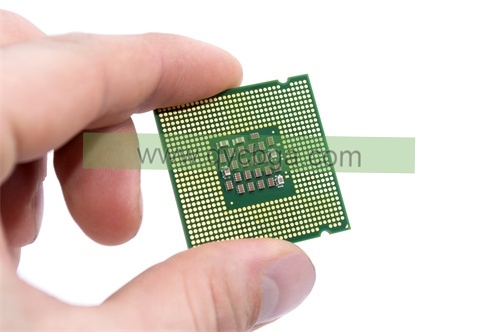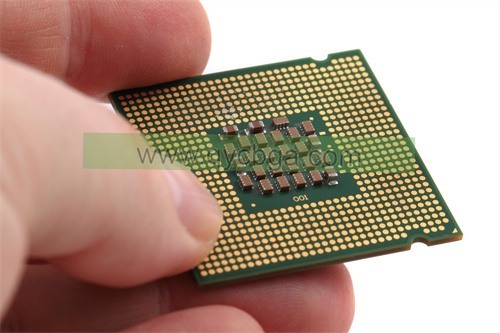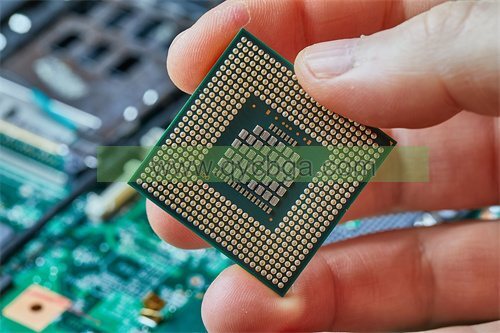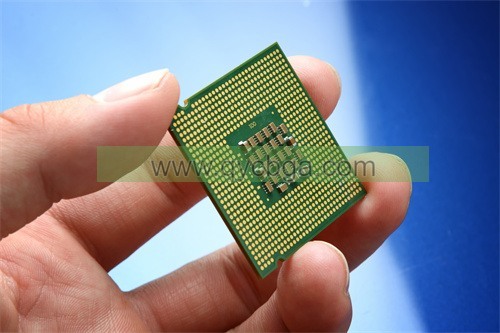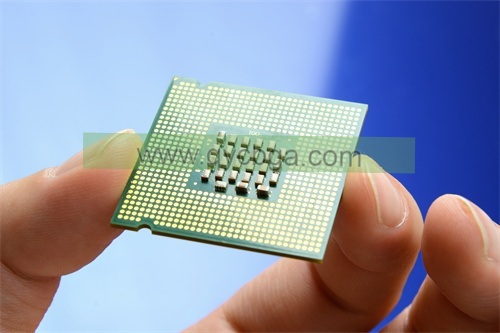POPパッケージ基板とは?
POPパッケージ基板メーカー,ポップ (パッケージ・オン・パッケージ) パッケージ基板は、複数の半導体パッケージを縦に積み重ねるように設計された高度なパッケージング技術です. この構成により、プロセッサやメモリなどの異なる機能コンポーネント間の相互接続長が短縮されるため、スペースが大幅に節約され、パフォーマンスが向上します. PoP基板は、3D統合のための効率的な手段を提供します, 基板スペースを最適化し、より短い相互接続により高帯域幅を実現. これらは、モバイルデバイスで特に有益です, ゲーム機, スペースが貴重で、高速動作が重要なその他の家電製品. 緊密な統合と電気的性能の向上を促進することにより、, PoPパッケージ基板は、コンパクトパッケージの開発において重要な役割を果たします, 高機能電子製品.
ポップ (パッケージ・オン・パッケージ) 基板は、集積回路で使用される高度なパッケージング技術の一種です (ICの) およびマイクロエレクトロニクス. これは、1つのパッケージ内で複数のチップまたはダイを互いに垂直に積み重ねることを含みます, これにより、より小さなフットプリントで機能とパフォーマンスを向上させることができます.
POP 構成の場合, 1チップ (通常、DRAMのようなメモリチップ) 別のチップの上に直接取り付けられている (通常、マイクロプロセッサやアプリケーション固有の集積回路などのロジックチップ). この構成により、チップ間の相互接続長が短縮されるなど、さまざまな利点が得られます, これにより、信号伝送が速くなり、消費電力が削減されます. また、より小さなフォームファクタ内でさまざまな機能の統合を強化することもできます, これは、スペースが限られているモバイルデバイスでは特に重要です.
POPパッケージの基板は、積層されたチップ間の電気的接続を提供する上で重要な役割を果たします, 熱放散の管理, パッケージ全体に機械的サポートを提供します. 基板は通常、絶縁材料の薄層で構成されています (ラミネートや有機基板など) 金属トレースとビアにより、チップ間で信号をルーティングし、それらをパッケージの外部ピンに接続.
全, 半導体業界では、POP技術の重要性がますます高まっています, 特にスマートフォンやタブレットなどのモバイルデバイスでは, より小型で電力効率の高いフォームファクタで、より高い性能と機能性が常に求められている場合.
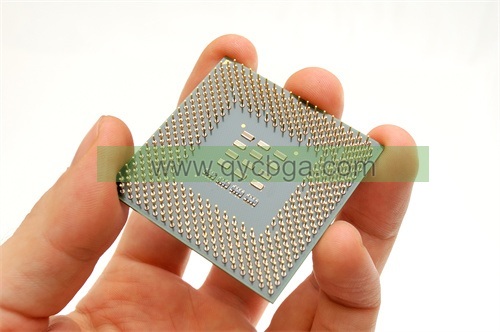
POPパッケージ基板メーカー
POPパッケージ基板設計リファレンスガイド.
デザイン ポップ (パッケージ・オン・パッケージ) 基板 最適なパフォーマンスを確保するためには、さまざまな要素を慎重に検討する必要があります, 確実, と製造可能性. ここでは、POPパッケージ基板設計の主要な側面を概説したリファレンスガイドを示します:
- 電気設計: 信号の結合とインピーダンスの不一致を最小限に抑えることにより、適切なシグナルインテグリティを確保. インピーダンスを制御した高速信号トレースを配線し、信号の反射とノイズを低減. 配電ネットワークの実装 (PDNの) 積み重ねられたチップにクリーンで安定した電力を供給するために.
- サーマルマネジメント: サーマルビアを組み込むことで熱放散の課題に対処, サーマルパッド, または基板設計へのヒートスプレッダー. コンポーネントの配置を最適化して、効率的な熱伝達を促進し、熱ホットスポットを防止します. 熱シミュレーションを実施して、さまざまな動作条件下での熱性能を検証.
- 機械的な考慮事項: 取り扱い中の機械的ストレスに耐えるように基板を設計する, 集会, と操作. 適切な材料特性と厚さを指定して、目的の機械的強度と剛性を実現します. フリップチップボンディングやアンダーフィルカプセル化などの標準アセンブリプロセスとの互換性を確保します.
- 製造可能性: 業界標準の設計ルールとガイドラインに準拠した製造性を考慮した設計. レイアウトを最適化して製造を容易にする, 集会, と検査. 選択した製造プロセスの機能と制限を考慮してください, フォトリソグラフィーなど, エッチング, とメッキ.
- 信頼性の向上: はんだ接合部のストレスを最小限に抑えるなどの適切な設計技術により信頼性を向上, ソルダーマスクのカバレッジの最適化, 可能であれば冗長信号パスを組み込む. 有限要素解析などの手法を使用した信頼性評価の実行 (FEAの) 加速寿命試験 (Alt キー) 潜在的な障害メカニズムを特定して軽減するため.
- シグナル/パワーインテグリティ解析: シミュレーション・ツールを使用して徹底的なシグナル・インテグリティとパワー・インテグリティ解析を行い、クロストークなどの問題を予測して軽減, 電圧降下, およびタイミング違反. さまざまな動作条件下での重要な信号と電力供給ネットワークの完全性を検証, 極端な温度や電圧変動を含む.
- EMI/EMCコンプライアンス: 電磁干渉を最小限に抑えるように基板を設計する (EMIの) エミッションと電磁両立性への準拠を確保 (EMCの) スタンダーズ. 適切なシールド技術を採用する, グランドプレーン, EMIリスクを軽減し、EMCパフォーマンスを向上させるための信号ルーティング手法.
- ドキュメントとコラボレーション: 基板設計を徹底的に文書化, スケマティックダイアグラムを含む, レイアウトファイル, 設計上の制約, および製造仕様. チップ設計者と緊密に連携, 組立ベンダー, また、テストパートナーは、全体的なシステム要件と制約との整合性を確保することができます。.
これらのガイドラインとベストプラクティスに従う, 設計者は、要求の厳しい性能を満たすPOPパッケージ基板を開発できます, 確実, 現代の電子機器の製造可能性要件.
POPパッケージ基板に使用されている材料は何ですか?
で使用される材料 ポップ (パッケージ・オン・パッケージ) 基板 パフォーマンス要件など、いくつかの要因に依存します, コストに関する考慮事項, と製造プロセス. しかし, POPパッケージの基板に一般的に見られる一般的な材料には、次のものがあります:
- 有機基質: 有機基板は、その優れた電気的特性により、POPパッケージで一般的に使用されています, 費用対効果, 製造の容易さ. これらの基材は通常、エポキシ樹脂やポリイミドなどの材料で作られています, 優れた絶縁性と機械的強度を提供します.
- 銅箔: 銅箔は、基板上に導電性トレースとビアを作成するために使用されます. 銅は、その高い導電性と優れたはんだ付け性のために好まれます. 必要な通電容量とインピーダンス制御に応じて、厚さの異なる銅箔を使用できます.
- ソルダーマスク: はんだマスクは、基板上に適用され、金属トレースを環境要因や組み立て中のはんだブリッジから絶縁および保護します. ソルダーマスク材料は通常エポキシベースで、さまざまな色で利用できます, 緑が最も一般的です.
- 誘電体材料: 誘電体材料は、導電層を分離し、トレース間に絶縁を提供するために使用されます. 一般的な誘電体材料にはエポキシ樹脂が含まれます, ポリイミド, とシアネートエステル. これらの材料は、高い絶縁耐力と熱安定性を提供します.
- 接着剤材料: パッケージ内で積み重ねられたチップを接着するために、接着剤が使用されます. これらの接着剤は、熱硬化性または熱可塑性であり、接着強度などの要因に基づいて選択されます, 熱伝導率, 基板およびチップとの互換性.
- はんだボール: はんだボールは、POPパッケージのチップと基板、および基板と基板の相互接続に使用されます. これらのはんだボールは、通常、スズ鉛などの共晶合金から作られています (SnPbの) または、錫-銀-銅などの鉛フリーの代替品 (SnAgCu(スナグキューム)) または錫銀 (暗礁).
- カプセル化材料: カプセル化材料を使用して、湿気から保護するためにパッケージ全体をカプセル化することができます, 機械的衝撃, およびその他の環境要因. これらの材料は通常エポキシベースで、硬化する前に液体の形で塗布されて固体封止剤を形成します.
- フィラーと補強材: 充填剤および補強材を基材材料に添加して、機械的強度を高めてもよい, 熱伝導率, またはその他のプロパティ. 一般的なフィラーにはガラス繊維が含まれます, シリカ, および陶磁器の粒子.
これらの材料を慎重に選択し、最適化することによって, 設計者は、性能を満たすPOPパッケージ基板を作成できます, 確実, ターゲットアプリケーションのコスト要件.
POPパッケージ基板はどのように製造されていますか?
POPの製造 (パッケージ・オン・パッケージ) 基板には、1つのパッケージ内で複数のチップをサポートおよび相互接続できる多層基板を作成するためのいくつかのステップが含まれます. ここでは、一般的な製造プロセスの概要を示します:
- 基板製造: このプロセスは、ベース基板の作製から始まります. これには、断熱材の薄い層を作成することが含まれます (エポキシ樹脂やポリイミドなど) 両面に銅箔を堆積させます. 次に、銅箔をフォトリソグラフィーとエッチングプロセスを使用してパターニングし、目的の導電性トレースとビアを作成します.
- レイヤービルドアップ: 基板上に導電性トレースと絶縁誘電体材料の多層が構築され、多層構造が形成されます. これは、銅箔と誘電体の交互の層をラミネートするなど、一連のステップによって達成されます, ドリルビア, ビアを銅でメッキして、層間の電気的接続を確立します.
- 銅めっきとエッチング: 導電性トレースを厚くし、ビアを充填するために銅めっきが行われます, 基板全体の低抵抗電気経路を確保. その後、余分な銅はエッチングプロセスによって除去され、最終的なトレースパターンとビアが定義されます.
- ソルダーマスクアプリケーション: はんだマスク層が基板上に適用され、金属トレースを環境要因や組み立て中のはんだブリッジから絶縁および保護します. ソルダーマスク材料は通常エポキシベースで、スクリーン印刷またはカーテンコーティング技術を使用して塗布されます.
- 表面仕上げ: 表面仕上げプロセスは、基板の金属表面の適切なはんだ付け性と耐食性を確保するために実行されます. 一般的な表面仕上げには、浸漬錫が含まれます, イマージョンシルバー, 無電解ニッケル浸漬金 (エニグ), 有機はんだ付け性防腐剤 (OSPの).
- テストと検査: 製造プロセス全体を通じて、品質と信頼性を確保するために、さまざまな試験および検査プロセスを実施しています. これには、電気的導通テストが含まれる場合があります, インピーダンス試験, 寸法検査, 欠陥の目視検査.
- 集会: 基板が製造されると, チップアセンブリの準備が整いました. これには、個々のチップを配置することが含まれます (通常は、ロジックチップとメモリチップです) フリップチップボンディングまたはその他の適切なボンディング技術を使用して基板上に. チップを基板に接着するために接着剤を塗布してもよい.
- カプセル化: 必要 に応じて, 組み立てられたチップおよび基板は、保護材料でカプセル化されてもよい (エポキシ樹脂など) 追加の機械的強度と環境保護を提供するため.
- 最終テスト: 完成したPOPパッケージは、適切な機能とパフォーマンスを確認するための最終テストを受けます. これには、機能テストが含まれる場合があります, 電気試験, 熱試験, 仕様と規格への準拠を検証するための信頼性試験.
これらの製造手順を正確かつ細部にまで注意を払って従うことによって, メーカーは、幅広い電子機器での使用に適した高品質のPOPパッケージ基板を製造できます.
POPパッケージ基板の応用分野
ポップ (パッケージ・オン・パッケージ) 基板は、スペースの最適化が可能なさまざまな電子デバイスに応用されています, ハイパフォーマンス, そして、コンパクトなフォームファクターが不可欠です. POPパッケージ基板の主な応用分野には、以下のようなものがあります:
- モバイルデバイス: POP技術はスマートフォンで広く使用されています, 錠剤, およびウェアラブルデバイス. メモリチップを積み重ねることによって (例えば。, ドラム) ロジックチップの上に (例えば。, マイクロプロセッサ), POPパッケージにより、メーカーはモバイルデバイスの限られたスペース内で、より大きなメモリ容量とより高速な処理速度を実現できます.
- 家電: POP基板は、デジタルカメラなどの幅広い家電製品にも採用されています, ポータブルメディアプレーヤー, ゲーム機, スマートホームデバイス. これらのアプリケーションは、コンパクトなサイズの恩恵を受けます, パフォーマンスの向上, POPテクノロジーによる消費電力の削減.
- カーエレクトロニクス: 自動車エレクトロニクス, スペースに制約があり、信頼性が重要な場合, POPパッケージは、先進運転支援システムで使用されます (ADASの), インフォテインメントシステム, ナビゲーションシステム, およびエンジン制御ユニット (ECU(エキュエート). POPテクノロジーは、自動車メーカーがパフォーマンスに対する厳しい要件を満たすのに役立ちます, 耐久性, と小型化.
- 産業用アプリケーション: 産業機器や機械では、処理ユニットにPOPパッケージを使用することがよくあります, データストレージ, およびセンサーインターフェース. これらのアプリケーションには、過酷な動作条件に耐えることができる堅牢な電子機器が必要です, また、POP基板は、コンパクトなフォームファクタで必要な性能と信頼性を提供できます.
- ネットワーキングおよび通信機器: POPテクノロジーは、ルーターなどのネットワークおよび通信機器で重要な役割を果たします, スイッチ, 基地局, およびアクセスポイント. 複数のチップを縦に積み重ねることにより, POPパッケージにより、メーカーはデータ処理機能を向上させることができます, ネットワークスループットの向上, レイテンシーを短縮.
- 医療機器: 医療機器および機器に, 信頼性, 小型化, そしてパフォーマンスが重要です, POP基板は、患者モニタリングシステムなどのアプリケーションで利用されています, 診断デバイス, イメージング機器, および埋め込み型医療機器. POPテクノロジーにより、より小型で携帯性の高い医療機器に高度な機能を統合できます.
- 航空宇宙・防衛: 航空宇宙および防衛アプリケーションでは、厳しい信頼性要件を持つ過酷な環境で動作できる高性能電子機器が求められています. POPパッケージはアビオニクスシステムで使用されます, 衛星通信システム, レーダーシステム, これらの厳しい仕様を満たすためのミリタリーグレードの電子機器.
全, POPパッケージ基板の汎用性と利点により、さまざまな業界の幅広いアプリケーションに適しています, 小型化の発展に貢献, より強力に, そしてよりエネルギー効率の高い電子機器.
POPパッケージ基板の利点は何ですか?
パッケージ・オン・パッケージ (ポップ) 基板技術にはいくつかの利点があり、集積回路パッケージングの魅力的な選択肢となっています. POPパッケージ基板の主な利点には、次のようなものがあります:
- スペースの節約: 1つのパッケージ内に複数のチップを垂直に積み重ねる, POPテクノロジーにより、従来の包装方法と比較して大幅なスペース節約が可能になります. このコンパクトなフォームファクタは、モバイルデバイスやウェアラブル電子機器など、スペースに制約のあるアプリケーションで特に有益です.
- 機能の向上: POPパッケージにより、機能が異なる複数のチップを統合可能, マイクロプロセッサやメモリチップなど, 1つのパッケージ内. この統合により、デバイスは複雑なタスクをより効率的に実行し、高度な機能をサポートします.
- パフォーマンスの向上: POPパッケージ内のスタックチップ間の相互接続長が短いため、信号伝搬遅延が減少し、シグナルインテグリティが向上します, 全体的なパフォーマンスの向上につながります. これにより、データ転送速度が速くなります, レイテンシーの低減, システムの応答性の向上.
- 電力効率の向上: POP技術は、コンポーネントの配置を最適化し、相互接続の寄生容量と寄生抵抗を低減することにより、電力効率の向上に貢献できます. これにより、デバイスはより長いバッテリ寿命と低消費電力を実現できます, これは、ポータブルおよびバッテリー駆動のデバイスにとって重要です.
- 柔軟性と拡張性: POP パッケージは、設計の柔軟性と、コンポーネントの追加またはアップグレードのスケーラビリティを提供します. メーカーは、特定のアプリケーション要件を満たし、将来の技術の進歩に対応するために、スタックチップの構成を簡単にカスタマイズできます.
- 費用対効果: POPテクノロジーは、従来のパッケージング方法と比較して製造の複雑さを増します, これにより、追加のコンポーネントの必要性が減るため、全体的なコストを節約できます, 組立工程の簡素化, 大量生産のためのデバイス設計の最適化.
- 熱管理の改善: POPパッケージにチップを縦に積み重ねると、サイドバイサイド構成と比較して効率的な熱放散が容易になります. これにより、過熱などの熱の問題を防ぐことができます, パフォーマンスと信頼性を低下させる可能性があります, 特にハイパワーアプリケーションの場合.
- 信頼性と耐久性: POPパッケージは通常、高い信頼性と耐久性を確保するために、厳格なテストと認定プロセスを経ます. 積み重ねられたチップ構成は、機械的安定性と衝撃などの環境要因に対する保護も提供できます, 振動, と湿気.
全, POPパッケージ基板の利点により、幅広いアプリケーションに適しています, モバイルデバイスを含む, 家電, 自動車用電子機器, 産業機器, その他, スペースの最適化, パフォーマンス, 信頼性は重要な考慮事項です.
POPパッケージ基板の費用はいくらですか?
POPのコスト (パッケージ・オン・パッケージ) 基質は、いくつかの要因によって大きく異なります, 設計の複雑さを含む, 使用した材料, 製造プロセス, 生産量, と市場の需要. ここでは、POPパッケージ基板のコストに影響を与える主な要因をいくつか紹介します:
- 設計の複雑さ: POP基板設計の複雑さ, レイヤー数を含む, トレースとビアの密度, 基板のサイズ, 製造コストに影響を与える可能性があります. より複雑な設計には、特殊な製造技術と材料が必要になる場合があります, コストの上昇につながる.
- 使用材料: 基板の材料の選択, 有機基質など, 銅箔, ソルダーマスク材料, およびカプセル化材料, 全体的なコストに影響を与える可能性があります. 特定の特性を持つ高品質の材料 (例えば。, 高い熱伝導率, 低誘電率) 標準的な材料よりも高価になる場合があります.
- 製造プロセス: POP基板の製造に使用される製造プロセス, フォトリソグラフィーを含む, エッチング, 鍍金, と組み立てプロセス, コストに影響を与える可能性があります. 高度な製造技術や設備は、より多くの先行投資を必要とする場合がありますが、効率を向上させ、長期的な生産コストを削減することができます.
- 生産量: 規模の経済は、POP基板のコストを決定する上で重要な役割を果たします. 生産量が多いほど、製造プロセスが最適化されるため、通常、単位あたりのコストが削減されます, バルク資材購入, より多くのユニットに対する固定費の償却.
- サプライヤーとの関係: 基板メーカーと材料供給者との関係, 備品, また、サービスはコストに影響を与える可能性があります. 長期的なパートナーシップを確立し、有利な価格条件を交渉することで、全体的なコストを削減できる可能性があります.
- 市場の需要: POP基板に対する市場の需要の変動は、価格のダイナミクスに影響を与える可能性があります. 高い需要は、メーカー間の競争の激化につながる可能性があります, 価格を下げる可能性があります, 需要が少ないと、固定費をカバーするために価格が高くなる可能性があります.
- カスタマイズと特別な要件: カスタマイズされた機能, 特別な要件, または、追加のテストおよび認定プロセスにより、追加の費用が発生する場合があります. これらのコストは、顧客の特定のニーズとカスタマイズの複雑さによって異なります.
POPパッケージ基板のコストは、通常、ケースバイケースで決定されることに注意することが重要です, 前述のすべての要素を考慮に入れる. そのため、, POPテクノロジーの活用に関心のある企業は、基板メーカーに相談して、特定の要件と量に基づいて正確なコスト見積もりを取得することをお勧めします.
POPパッケージ基板に関するFAQ
POPパッケージ基板とは?
POPパッケージ基板は、集積回路で使用される高度なパッケージング技術の一種です (ICの) およびマイクロエレクトロニクス. これは、1つのパッケージ内で複数のチップまたはダイを互いに垂直に積み重ねることを含みます.
POPパッケージ基板の利点は何ですか?
POPパッケージ基板には、スペースの節約などの利点があります, 機能の向上, パフォーマンスの向上, 電力効率の向上, 柔軟性, スケーラビリティ, 費用対効果, 熱管理の改善, と信頼性.
POPパッケージ基板にはどのような材料が使用されていますか?
POPパッケージの基板に一般的に使用される材料には、有機基板が含まれます (エポキシ樹脂またはポリイミド), 銅箔, ソルダーマスク材料, 誘電体材料, 粘着材料, はんだボール, カプセル化材料, フィラー, と補強.
POPパッケージ基板はどのように製造されていますか?
POPパッケージ基板の製造工程には、基板製造などの工程があります, レイヤーのビルドアップ, 銅めっきとエッチング, ソルダーマスクアプリケーション, 表面仕上げ, 試験と検査, チップアセンブリ, カプセル化 (随意), そして最終テスト.
POPパッケージ基板はどのような用途で使用されていますか?
POPパッケージ基板は、さまざまな電子機器や業界で使用されています, モバイルデバイスを含む, 家電, 自動車用電子機器, 産業用アプリケーション, ネットワークおよび通信機器, 医療機器, 航空宇宙および防衛.
POPパッケージ基板の費用はいくらですか?
POPパッケージ基板のコストは、設計の複雑さなどの要因によって異なります, 使用材料, 製造プロセス, 生産量, サプライヤーとの関係, 市場の需要, カスタマイズ, および特別な要件.
POPパッケージ基板を設計する際の考慮事項は何ですか?
POPパッケージ基板の設計における主な考慮事項には、電気設計が含まれます (シグナルインテグリティ, 配電), サーマルマネジメント, 機械的な考慮事項 (機械的強度, 硬直), 製造可能性, 信頼性の向上, シグナル・インテグリティ/パワー・インテグリティ解析, EMI/EMCコンプライアンス, ドキュメンテーション, とコラボレーション.
 FCBGAパッケージ基板メーカー
FCBGAパッケージ基板メーカー


